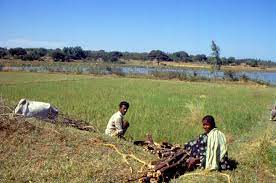Vikas P. Meshram
India is the second largest food producing country in the world and we are number one in the production of milk, pulses, rice, fish, vegetables and wheat. Despite this, a large population of the country is a victim of malnutrition. According to the United Nations’ report ‘The State of Food Security and Nutrition in the World 2022’, people’s struggle with hunger has increased rapidly after the Corona period of 2019. In the year 2021, 76.8 crore people in the world were found to be undernourished, out of which 22.4 crore i.e. 29 percent were Indians. This is a quarter of the total number of undernourished people in the world.
Malnutrition is one of the most serious problems in India, yet it has received the least attention. Today India has the highest number of stunted and 2.55 crore stunted children in the world. As a result, the burden of disease on the country is very high, National Family Health Survey-4 data shows that the prevalence of malnutrition in the country has decreased, but today more than half of the children in 51 percent of low-income families are stunted and 49 percent are underweight.
According to the Global Hunger Index report released on October 14 – “Hunger levels in India are critical.” India ranks 107 out of 121 countries in the world. India’s score is 29.1, while ‘zero’ means no one is hungry. India also lags behind its neighbors – Nepal (81st), Bangladesh (84th), Sri Lanka and Pakistan (99th).
It is estimated that on average about 20 percent of children under the age of 5 suffer from visible and life-threatening malnutrition. About 35 percent of children are not as tall as they should be. Of course, there is a fundamental difference between hunger, unhealthy food, and malnutrition.
The authors and compilers of this Global Hunger Index report have compiled data on hunger and malnutrition in India. Compared to a population of over 140 crores, the hunger situation in India presents a very alarming situation. India’s Food Security Act, Public Distribution System, Pradhan Mantri Garib Kalyan Food Yojana, Poshan Mission, Anemia Free Mission etc. issued from 2020 onwards, malnutrition and hunger are not reducing.
Malnutrition is still a serious problem in India with more than 33 lakh children being malnourished. Although the Government of India has launched a ‘National Poshan Abhiyan’ campaign to ensure a ‘malnutrition-free India’ by 2022, the goal seems far off.
In 2021, the number of undernourished people in the world was estimated to be 768 million. Of these, 224 million (about 29 percent) were Indians. Today the situation has improved a lot, as food security is a constitutional right of the average Indian. In this context it is also worth noting that India is the second largest food grain producing country in the world. India ranks first in the world in the production of milk, pulses, rice, fish, vegetables and wheat. How can such a country be ‘hungry’? Yet there is widespread malnutrition in the country, which is an alarming situation. India has a considerable population below the poverty line. The Government of India needs to consider these figures from these aspects as well as through projects like Nutrition Mission 2.0 and Mid Day Meal, as India has changed completely since independence.
India is becoming self-reliant. The average growth rate of agriculture sector has been consistently positive
According to a report titled ‘The State of Food Security and Nutrition in the World 2022: Repurposing Food and Agriculture Policies to Make Healthy Diets More Affordable’ by the United Nations Food and Agriculture Organization, it concludes that hunger and malnutrition in India are at critical levels?
The important question is whether we will take this problem seriously.







